Gaming (Walker’s Retreat): IIOf course there’s the question of “Can I play this?” and the answer is “Yes.” This is the ruleset that Jon Mollison mentioned in his video that I posted the other day.
Review (John C. Wright): Crucifixion Press Resurrects Pulse-Pounding Pulp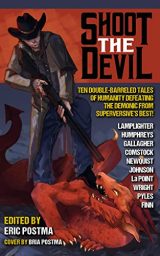 Action In The New Anthology, ‘Shoot The Devil’: Nearly a century later, Solomon Kane’s two-fisted spirit lives in an army of movies and television shows. From Hammer Films’ katana-wielding Captain Kronos, to Blade, Buffy and Dylan Dog, The Witcher, the Winchester brothers and Ash Vs The Evil Dead, to Exorcist Vengeance, Abraham Lincoln: Vampire Hunter and everything in between, the never-ending war on the forces of darkness continues unabated.
Action In The New Anthology, ‘Shoot The Devil’: Nearly a century later, Solomon Kane’s two-fisted spirit lives in an army of movies and television shows. From Hammer Films’ katana-wielding Captain Kronos, to Blade, Buffy and Dylan Dog, The Witcher, the Winchester brothers and Ash Vs The Evil Dead, to Exorcist Vengeance, Abraham Lincoln: Vampire Hunter and everything in between, the never-ending war on the forces of darkness continues unabated.
D&D (RPG Pundit): The latest data sure indicates that I’ve been right all along about the speeding up of D&D sales decline the more woke their garbage products become…
RPG (Grognardia): Alongside Dungeons & Dragons and Traveller, Call of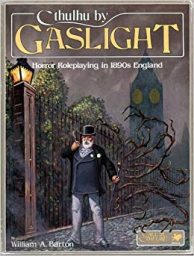 Cthulhu occupies a special place in my heart. The source of my affection is twofold. First, I’ve simply played the game a great deal in the decades since I first encountered it. Second, the game further familiarized me with the works of H.P. Lovecraft and those of his friends, disciples, and imitators, many of whom has since become my favorite writers.
Cthulhu occupies a special place in my heart. The source of my affection is twofold. First, I’ve simply played the game a great deal in the decades since I first encountered it. Second, the game further familiarized me with the works of H.P. Lovecraft and those of his friends, disciples, and imitators, many of whom has since become my favorite writers.
Fiction (Wasteland & Sky): What we know of as Pulp Fiction died just over three quarters of a century ago. It existed for a brief moment in time, a drop in the bucket of the typhoon of history, before it was cast to the four winds never to be seen again. Pulp, for all intents and purposes, died before in the 20th century did. Even before the pulp format itself died, the fiction itself had been warped.
Cinema (Arkhaven Comics): In November of 1934, a stage Magician who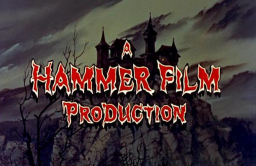 worked under the name William Hammer (real name William Hinds) decided to go into the production end of the movie business and founded the most successful independent British film company in history.
worked under the name William Hammer (real name William Hinds) decided to go into the production end of the movie business and founded the most successful independent British film company in history.
Hammer Films followed the established traditions of the great British Film companies in the 1930s and went broke almost immediately. While Hammer Films was liquidated, its distribution arm, Exclusive Films continued to do great.
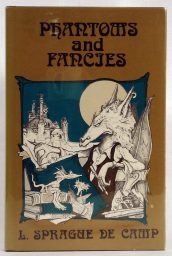 Poetry (Sprague de Camp Fan): L. Sprague de Camp published three poetry collections in his lifetime. I reviewed the third on the de Camp facebook group back in April 2020, noting at the time I would not be covering the other two, as they were rarer, more expensive, and I didn’t have them. Now I do—the second, anyway—so this de Camp highlight is devoted to it: Phantoms & Fancies (Baltimore, Maryland, The Mirage Press, 1972).
Poetry (Sprague de Camp Fan): L. Sprague de Camp published three poetry collections in his lifetime. I reviewed the third on the de Camp facebook group back in April 2020, noting at the time I would not be covering the other two, as they were rarer, more expensive, and I didn’t have them. Now I do—the second, anyway—so this de Camp highlight is devoted to it: Phantoms & Fancies (Baltimore, Maryland, The Mirage Press, 1972).
Poe (City-Journal): The Narrative of Arthur Gordon Pym of Nantucket is the Voynich manuscript of American literature. As the only novel written by Edgar Allan Poe, its historical importance is unquestionable; as a literary work, it is mystifying. Its catalog of atrocities and incidents, which includes cannibalism, drownings, ax murders, shootings (with muskets and pistols), a ghost ship crammed with rotting corpses, a shark feeding frenzy, a landslide, and a mass-casualty explosion, combined with a nightmare symbolism have inspired both interpretation and incredulity.
Fantasy (Dark Worlds Quarterly): “Fantasy on the March” was Fritz Leiber’s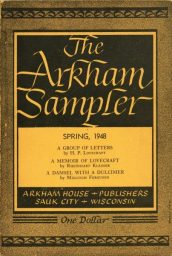 rallying call to fans of Fantasy, both heroic and dark. The piece appeared in The Arkham Sampler (Spring 1948). This quarterly magazine was a promotional publication for Arkham House Press. Its print run was about 1200 copies. Edited by August Derleth, the company had published Leiber’s Night’s Black Agents in 1947. This first collection by the San Francisco author was filled horror and heroic fantasy tales from Weird Tales and Unknown. It featured the first publication of the Fafhrd & Gray Mouser story “Adept’s Gambit”.
rallying call to fans of Fantasy, both heroic and dark. The piece appeared in The Arkham Sampler (Spring 1948). This quarterly magazine was a promotional publication for Arkham House Press. Its print run was about 1200 copies. Edited by August Derleth, the company had published Leiber’s Night’s Black Agents in 1947. This first collection by the San Francisco author was filled horror and heroic fantasy tales from Weird Tales and Unknown. It featured the first publication of the Fafhrd & Gray Mouser story “Adept’s Gambit”.
Monsters (Tentaclii): There’s a new special issue of the scholarly open-access journal Shima, on sea and water-monsters. I also note that the earlier Vol. 15 No. 2, and Vol. 12 No. 2, were on mermaids.
Firearms (U.S. Concealed Carry): Based on the myriad choices of revolvers still available in gun shops and from manufacturers’ websites, semi-automatic pistols aren’t the only firearms used for concealed carry. The typical snub-nosed revolver still holds a prominent place in the handgun market despite semi-autos’ ability to deliver more firepower per ounce downrange. Revolvers really shine in close-quarter engagement.
revolvers still available in gun shops and from manufacturers’ websites, semi-automatic pistols aren’t the only firearms used for concealed carry. The typical snub-nosed revolver still holds a prominent place in the handgun market despite semi-autos’ ability to deliver more firepower per ounce downrange. Revolvers really shine in close-quarter engagement.
History (Forgotten Weapons): Amos Rogers and Julius Spencer ran a company making mostly farm equipment in the 1840s and 1850s. In 1859, they took on a firearms manufacturing contract (as mechanical fabrication companies often do) to make Pettengill revolvers. The Pettengill was not a fantastic design, but it was good enough that after the Civil War broke out, the Union gave Rogers & Spencer a contract to make 5,000 of them and also 25,000 standard muskets. The musket production went well, although the revolvers had problems – more due to the design than any fault of the manufacturers.
Robert E. Howard (Voyage Comics): Robert E. Howard is renowned among fantasy fans as the creator of such memorable “Sword and Sorcery” characters as Conan the Cimmerian, Kull of Atlantis, and Solomon Kane. In fact, his stories have been hailed as “some of the most influential fantasy writing of the twentieth century, second only to J. R. R. Tolkien’s Lord of the Rings saga.”
Streaming (Bounding Into Comics): CD Projekt Red has announced a remake of the first entry in The Witcher series, boasting the upcoming title as a “modern reimagining” of the original and revealing that it will be “built from the ground up.”
remake of the first entry in The Witcher series, boasting the upcoming title as a “modern reimagining” of the original and revealing that it will be “built from the ground up.”
Fantasy (Isegoria): “Game of Thrones” superfans Linda Antonsson and Elio M. García Jr. have been collaborating with George R.R. Martin since before HBO’s hit adaptation of his “A Song of Ice and Fire” books, but when Martin publicized their new book on social media, they were “called out” for their supposed racism:
D&D (Spriggan’s Den): While classic dungeon crawling is a very fascinating and fun form of gameplay in its own right, I think the archetypical dungeon crawl is not a good basis to build a Sword & Sorcery campaign around. The classic dungeon crawl, with its complex underground labyrinths, countless traps, secret doors, and numerous small hidden stashes of treasures all over the place naturally promotes a play style that is very cautious, methodical, and calculated.
 Authors (DMR Books): October 25 marked the sixty-fifth anniversary of Lord Dunsany’s death. Proper respects should be paid to the man who spearheaded a new phase in the evolution of fantasy literature. Dunsany’s works sparked the imaginations of Tolkien and Lovecraft when first published and they inspire authors such as Neil Gaiman and George R.R. Martin to this very day.
Authors (DMR Books): October 25 marked the sixty-fifth anniversary of Lord Dunsany’s death. Proper respects should be paid to the man who spearheaded a new phase in the evolution of fantasy literature. Dunsany’s works sparked the imaginations of Tolkien and Lovecraft when first published and they inspire authors such as Neil Gaiman and George R.R. Martin to this very day.
Horror (Old Style Tales): But fictional ghosts are entirely different animals, whose every choice, action, and detail carry profound significance. In the critical disciplines of Structuralism and Semiotics, the appearance of a ghost is no less intentional than the existence of a spark plug in an engine, and its influence on the characters is no less transformative than the process by which the same spark plug converts gasoline into purposeful explosions.
Cinema (Fantasy Literature): The 1998 Japanese thriller Ringu has turned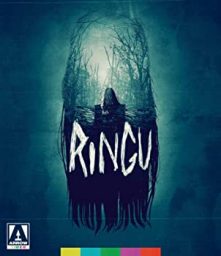 out to be that country’s most successful horror film of all time, spawning a series of movies over there as well as here in the U.S. I have not seen the American remake, but word on the street has it that the original is the one to go with, and since I’ve seen very few remakes that could compare to their original.
out to be that country’s most successful horror film of all time, spawning a series of movies over there as well as here in the U.S. I have not seen the American remake, but word on the street has it that the original is the one to go with, and since I’ve seen very few remakes that could compare to their original.
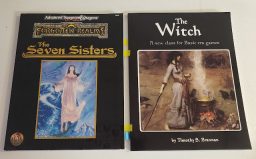 D&D (The Other Side): I have been asked in the past why I have not stated up one of the greatest spellcasters in D&D lore before and the answer I have always given is this, I wanted to do it right.
D&D (The Other Side): I have been asked in the past why I have not stated up one of the greatest spellcasters in D&D lore before and the answer I have always given is this, I wanted to do it right.
That is partially true. The other part is that a character like The Simbul, Alassra Shentrantra Silverhand, Witch Queen of Aglarond has to be done with care and reverence
Streaming (Bounding Into Comics): With Amazon’s live-action bastardzation of J.R.R. Tolkien’s seminal fantasy works having under performed by practically every metric, a new rumor suggests that the company will be “retooling” The Lord of the Rings: The Rings of Power for its second season – starting with the sidelining of its current showrunners, J.D. Payne and Patrick McKay.
bastardzation of J.R.R. Tolkien’s seminal fantasy works having under performed by practically every metric, a new rumor suggests that the company will be “retooling” The Lord of the Rings: The Rings of Power for its second season – starting with the sidelining of its current showrunners, J.D. Payne and Patrick McKay.
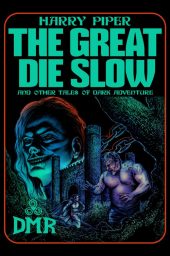 Authors (DMR Books): Please introduce yourself and tell us about your background as a writer:
Authors (DMR Books): Please introduce yourself and tell us about your background as a writer:
I’m Harry Piper and I’ve been writing for a decade and a bit. I’m Welsh, Catholic and into Dungeons and Dragons to a slightly worrying extent.
Tolkien (Men of the West): The duel of Fingolfin and Morgoth was a legendary battle in Tolkien’s legendarium, and this video brings that battle and the fall of High King Fingolfin to life!
Games (Jon Mollison): Ryan Dunfee of Sentient Robot Games just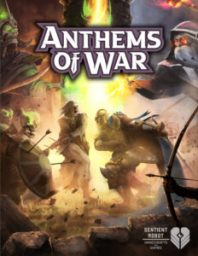 released Anthems of War, a fantasy skirmish miniature wargame with much to recommend it. He was kind enough to ask me to whip up a couple of videos on the game, and by way of thanks sent me both the PDF and a hard-copy of the game.
released Anthems of War, a fantasy skirmish miniature wargame with much to recommend it. He was kind enough to ask me to whip up a couple of videos on the game, and by way of thanks sent me both the PDF and a hard-copy of the game.
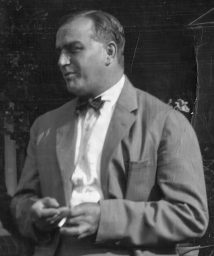 Pulp (Pulp Super-Fan): L. Patrick Greene (1891-1971) is a pulp author probably best known for his series about English adventurer Aubrey St. John Major, aka “the Major.” Born in England, Greene worked as a young man in Rhodesia for several years before being sent home after hurting his back. He would use this experience in his writing. He moved to the U.S. in 1913 and became a U.S. citizen.
Pulp (Pulp Super-Fan): L. Patrick Greene (1891-1971) is a pulp author probably best known for his series about English adventurer Aubrey St. John Major, aka “the Major.” Born in England, Greene worked as a young man in Rhodesia for several years before being sent home after hurting his back. He would use this experience in his writing. He moved to the U.S. in 1913 and became a U.S. citizen.
Masculinity (Art of Manliness): There’s a kind of listless, restless, low-grade anxiety permeating our society today. There are many causes from a culture-wide perspective: over-stimulation, declining levels of trust in those around us and our institutions, the displacement of human workers with machines at increasing speeds, lack of central values, proliferating lifestyle options (and social media to toggle through them all), collapsing narratives, and many, many more.
Science Fiction (SF Remembrance): Still, Williamson persisted, and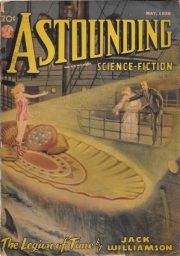 when Astounding Science Fiction started hitting its stride in 1934 he jumped ship pretty readily, giving us perhaps the most notable SF novel of that year, The Legion of Space. But whereas Smith and Hamilton remained most known for their grand space operas, and while Williamson was no slouch in that department, he would soon branch out and reveal an almost startling intelligence.
when Astounding Science Fiction started hitting its stride in 1934 he jumped ship pretty readily, giving us perhaps the most notable SF novel of that year, The Legion of Space. But whereas Smith and Hamilton remained most known for their grand space operas, and while Williamson was no slouch in that department, he would soon branch out and reveal an almost startling intelligence.
Art (Pulp Super Fan): A sort-of follow-up recently came from IDW, this time edited only by Ed Hulse: The Art of Pulp Fiction: An Illustrated History of Vintage Paperbacks. And sadly, if you pay attention to the title, it’s really not about pulp fiction, but on paperbacks — which are not pulp.
Horror (Arkhaven Comics): Kolchak was never just about the monsters. 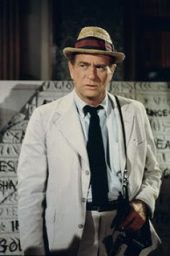 What carried the show was Darren McGavin’s portrayal of a washed-up, former New York Times reporter who had entered the world of the supernatural. The Kolchak Papers was an unpublished novel by Jeff Rice. I have no idea how the manuscript ended up in the hands of I Am Legend author Richard Matheson. Regardless, Matheson did a screenplay for a movie about a vampire in Las Vegas.
What carried the show was Darren McGavin’s portrayal of a washed-up, former New York Times reporter who had entered the world of the supernatural. The Kolchak Papers was an unpublished novel by Jeff Rice. I have no idea how the manuscript ended up in the hands of I Am Legend author Richard Matheson. Regardless, Matheson did a screenplay for a movie about a vampire in Las Vegas.
Cinema (Fantasy Literature): The ball really began rolling for Hammer in 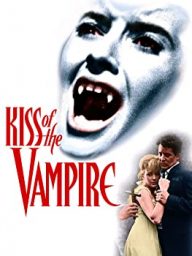 1957 and ’58, though, with the releases of The Curse of Frankenstein and Horror of Dracula (both of them costarring two of the studio’s most dependable players, Peter Cushing and Christopher Lee), and from that point on, the studio would become one of the foremost producers of quality horror fare in the world. Starting in 1957 and over the next 15 years, there would flow out from Hammer four films featuring Professor Quatermass, seven with Frankenstein, nine with Dracula, four with the Mummy, 14 psychological thrillers (I have recently written here of my love for the Hammer film Nightmare, from 1964), not to mention prehistoric films and colorful swashbucklers.
1957 and ’58, though, with the releases of The Curse of Frankenstein and Horror of Dracula (both of them costarring two of the studio’s most dependable players, Peter Cushing and Christopher Lee), and from that point on, the studio would become one of the foremost producers of quality horror fare in the world. Starting in 1957 and over the next 15 years, there would flow out from Hammer four films featuring Professor Quatermass, seven with Frankenstein, nine with Dracula, four with the Mummy, 14 psychological thrillers (I have recently written here of my love for the Hammer film Nightmare, from 1964), not to mention prehistoric films and colorful swashbucklers.
Review (Frontier Partisans): The first was The Boats of the Glenn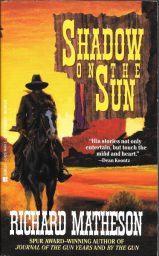 Carrig, which I already reviewed here, and this second one is Shadow on the Sun by Richard Matheson. Matheson was fairly influential as a horror writer. His novel I Am Legend set the template of the post-apocalyptic horror novel that most zombie stories follow (even though the creatures in the novel were vampires, not zombies.) He wrote many episodes of the Twilight Zone that are considered classics. Stephen King names him as one of his favorite authors.
Carrig, which I already reviewed here, and this second one is Shadow on the Sun by Richard Matheson. Matheson was fairly influential as a horror writer. His novel I Am Legend set the template of the post-apocalyptic horror novel that most zombie stories follow (even though the creatures in the novel were vampires, not zombies.) He wrote many episodes of the Twilight Zone that are considered classics. Stephen King names him as one of his favorite authors.
Horror (Lawrence Person): Mojo storyteller Joe R. Lansdale tells about some early adventures on the haunted banks of the Sabine river, from water moccasins to the legend of the Goat Man to spending the night in an old cemetery. “One of the times we came to the cemetery, one of our group brought a recorder. A device that would be crude by modern standards, with a spinning tape and heavy buttons that required determination and strong fingers to activate and stop.”
Horror (Paperback Warrior): We’ve covered books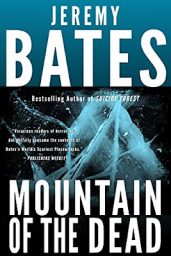 by horror author Jeremy Bates, most notably his World’s Scariest Places series of stand-alone novels. The book is partially presented in first-person narrative by Corey, a bestselling author of non-fiction. He recounts his harrowing expedition to Russia’s frosty Northern Ural mountains, one of the most inhabitable regions on Earth.
by horror author Jeremy Bates, most notably his World’s Scariest Places series of stand-alone novels. The book is partially presented in first-person narrative by Corey, a bestselling author of non-fiction. He recounts his harrowing expedition to Russia’s frosty Northern Ural mountains, one of the most inhabitable regions on Earth.
Horror (Grim Dark Magazine): COLD AS HELL by Rhett Bruno is the sequel to DEAD ACRE, an audiobook original that I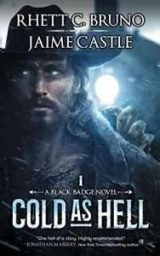 enjoyed. Cold as Hell, by contrast, is a story that is available in both Kindle as well as Audible forms. Of the two, I strongly recommend the audiobook version due to the fact it is narrated by Jaime Castle (AKA Arthur Morgan from Red Dead Redemption 2). It’s not that the book isn’t good without Jaime’s narration, but he does such a fantastic job and is such a familiar sounding voice to fans of said game that it really pumps up the experience.
enjoyed. Cold as Hell, by contrast, is a story that is available in both Kindle as well as Audible forms. Of the two, I strongly recommend the audiobook version due to the fact it is narrated by Jaime Castle (AKA Arthur Morgan from Red Dead Redemption 2). It’s not that the book isn’t good without Jaime’s narration, but he does such a fantastic job and is such a familiar sounding voice to fans of said game that it really pumps up the experience.
History (Frontier Partisans): In my youth, I saw the Blackfoot people only through the eyes of the American Mountain Men — and a demonic vision they were. Inveterate enemies of the American fur trappers in the northern Rocky Mountains in the early 19th Century, they were portrayed as a sworn enemy is always portrayed — as an “other” with savage characteristics, and no redeeming qualities.
The firearms link is dead 🙁